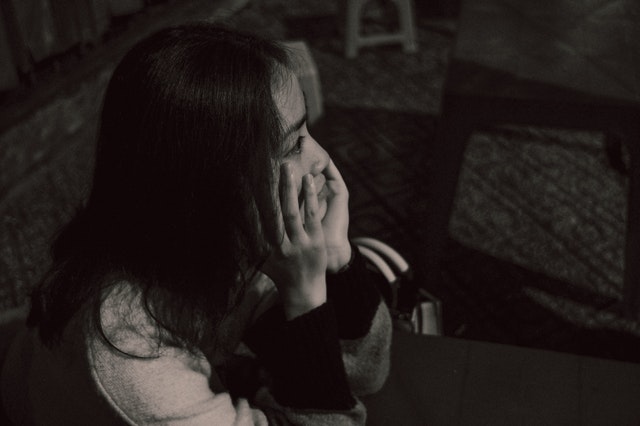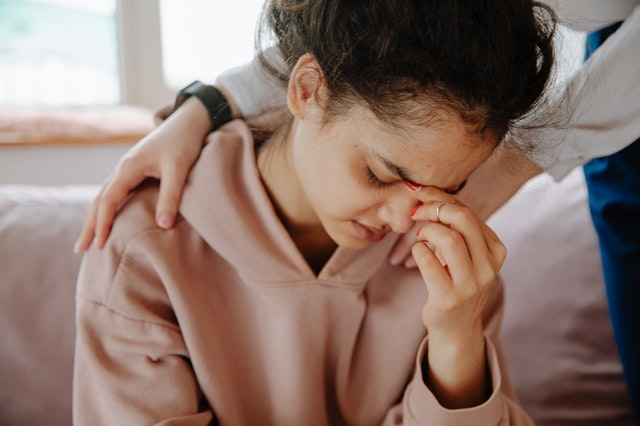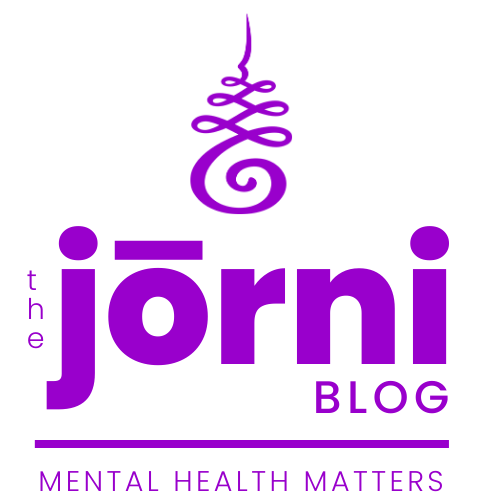
Really understanding depression and anxiety
What understanding depression and anxiety is missing
Depression and anxiety have unfortunately become very commonplace in our society. Even pop culture has picked up the odd reference to “being depressed”, or “popping pills” for anxiety. Yet still, there are surprisingly few honest and helpful narratives out there about these conditions. And that makes understanding depression and anxiety very difficult.
It seems the references that are out there are still shrouded in sarcasm and shame.
There are few genuinely constructive conversations being had in the open. I know depression and anxiety can be hard to talk about, but the more embarrassed or shy we are, the less likely we are to find help. And we prevent ourselves and others from actually understanding these conditions.
“If you know someone who’s depressed, please resolve never to ask them why. Depression isn’t a straightforward response to a bad situation; depression just is, like the weather.”
- Stephen Fry
Struggling with depression and anxiety is like a jungle. It is confusing and convoluted. Nothing seems straight forward. Symptoms can be different for everyone. The experience is different for everyone. So, truly understanding depression and anxiety can be scary and overwhelming. The fear of trying to figure out what is wrong might stop you from seeking help altogether.

Understanding Depression
Some of us may be having a hard enough time trying to understand what we are feeling, never mind what a doctor may call it. But it can be helpful sometimes to know that what we are experiencing (while not pleasant) is an “official” symptom of a medically relevant condition. This helps us feel less “crazy” and can make us feel a little less alone.
“Yes, I really am finding it hard to process thoughts quickly, and yes, that can actually be a symptom of depression. No, I’m not alone, because millions of people in the world struggle with similar things every day. Yes, there is treatment, and many people can heal their depression.”
So let’s have a look at the types of depression in an effort to help us better understand what we may be feeling. Don’t worry about the terms too much. And don’t think you need to memorize all the descriptions and know what applies to you. This is simply to give you an idea of some of the faces of depression and anxiety.
Major depressive disorder
There are multiple “official depression scales” that doctors use to diagnose major depressive disorder. Depending on your answers, you are rated on a scale of how severe the depression is. You are diagnosed with major depressive disorder if you experience at least 5 of the symptoms for 2 weeks or longer. The diagnostic symptoms include:
These symptoms will usually start to impact your social, occupational and educational function, and you will find yourself struggling to meet those responsibilities
Persistent depressive disorder (dysthymia)
This type of depression is characterized by a sad or low mood that is persistent for most days during the week, and has been present in your life for at least 2 years. It is not as severe as major depressive disorder, but can be a more long-term burden.
Post-traumatic stress disorder
This is characterized by depression that develops after going through a major traumatic event, whether it be military combat, childbirth, surviving natural disaster or a violent assault. This type of depression is often accompanied by anxiety, nightmares and even “flash-backs” of the traumatic event.

Adjustment Disorder with Depressed Mood
This is a type of depression that starts within 3 months of a specific stressor. Unlike Post-traumatic Stress Disorder, this type of depression can be triggered by any event, even a “positive” event like a new job, or a wedding. Usually, the event will cause a significant change in the person’s life, and the stress this causes becomes the trigger for the depression.
Bipolar disorder (formerly manic depressive disease)
This type of depression is characterized by severe swings from depressive episodes to episodes of unusually high energy, mood and/or activity. A person may go from feeling utterly hopeless and lethargic, to feeling euphoric, overly confident or excited. This instability can affect a person’s decision making skills, and they may act reckless, impulsive or irritable. Some people may even experience hallucinations or delusions during these episodes.
Seasonal Affective Disorder (SAD)
This type of depression is related to changing seasons. While most cases of SAD are related to the shorter days and lack of sunshine in winter, SAD can also affect people in any other season, including summer. A lethargy, low or sad mood during a particular season can even cause a person to dread that time of year as it approaches, causing anxiety and stress.
Perinatal depression/Postpartum depression
This is a type of depression that is related to the prenatal and postpartum period of a woman's life. Depressive episodes can start during pregnancy, and are usually worst during the baby’s first year. While hormonal changes during this time can cause an unstable or sad mood (referred to as the “baby blues), perinatal depression is a more severe and complex depression. If not diagnosed or treated, perinatal depression can even persist for years after the birth.
Keep in mind that men can be affected by postpartum depression as well. This is a fact science is just starting to explore further. We are just starting to see more information crop up on the Internet about male postpartum depression. This has been traditionally considered a “female-only problem” and this understanding is slowly changing as more information becomes available.
Premenstrual dysphoric disorder
This type of depression is a severe form of the better-known premenstrual syndrome (PMS). Emotional and physical symptoms will begin shortly after ovulation and end once menstruation starts. They can include headache, fatigue, constipation or diarrhea, and abdominal pain, but the hallmark symptom of PMDD is drastic mood swings. The mood changes and depressive state can be so severe that it impacts social, occupational and educational functioning.

Understanding anxiety
Anxiety disorders
When I first started looking into anxiety disorder, I found it very hard to know what kind of worrying was “normal” and what kind would be considered a “disorder”. I’m afraid the answer is not as clear cut as we may like it. But it helps to understand that we all experience things a little differently.
To be honest, my own takeaway was that if your anxiety starts interfering with your life - interrupting sleep, keeping you from eating, or causing you to binge eat - then it is something more than “normal” worry.
Anytime you are worried about your worry, you should go talk to your doctor about it. Having said that, anxiety can present in some different ways, so let’s have a look at the different types of anxiety disorders that exist.

Generalized Anxiety Disorder (GAD)
This type of anxiety disorder is a more broad term for the “type of worry that worries you”. It is chronic anxiety and exaggerated worry that is constant without really defined triggers. If you find that you are spending a large part of your day worrying about things that don’t seem to affect anyone else that much, then you may be struggling with an anxiety disorder.
Of course, there are times of severe stress, like when a loved one passes away, or you are escaping a natural disaster, but if you are continuing to feel that kind of tension without defined events that cause it, then your anxiety will start to have a negative, rather than a protective effect on you. This overactive anxiety may have the following symptoms:
If you are struggling with generalized anxiety disorder, these symptoms will become severe enough that they start to disrupt your social, occupational or educational function.
Obsessive-Compulsive Disorder (OCD)
This type of anxiety is characterized by recurrent unwanted thoughts, obsessions or repetitive behaviors (compulsions). A person may feel compelled to perform certain rituals or organize their environment in a certain way in order to feel more at ease, yet a certain level of anxiety remains constant. These compulsions can become so strong, and take such strong precedence that they start to interfere with day to day activities.
Panic Disorder
A type of anxiety disorder where people experience acute episodes of intense fear and/or panic. A person may experience these “panic attacks” rarely, or more frequently depending on the severity of their condition. During a panic episode a person can feel symptoms so severe they may think they are having a heart attack. Symptoms of a panic episode include shortness of breath, chest pains, loss of vision, heart palpitations, abdominal distress and sweating.
Social Phobia (or Social Anxiety Disorder)
This type of anxiety disorder is characterized by an overwhelming anxiety in social situations. A person may feel really self-conscious in social situations, to the extent that they cannot interact with other people, or sometimes even leave the house.

Can I have depression AND anxiety together?
Yes, unfortunately you can be experiencing depression and anxiety at the same time, or on and off between the two. Mental conditions like anxiety or depression are not as “neat and tidy” as the above definitions can make them seem. The human body is a complex system that is constantly changing and adapting. While we have an understanding of these conditions, we still don’t yet know the full causes and different expressions in every person.

We are all unique and come with our own life experiences, habits and physiologies. We can experience any of the above conditions on a scale of severity, and even experience multiple conditions at the same time. While the above “categories” can be helpful as a starting point of treatment, it’s important to remember that your experience is completely unique to you, so you can never be “wrong” for feeling (or not feeling) anything.

Healing depression, anxiety, or both
The complexity of depression and anxiety can make it harder to understand and treat. But, it can be helpful to remember that sometimes when you find a treatment that works for you, it can heal both your depression and your anxiety. While medication and psychotherapy are the most recommended treatments by doctors, I found that supplementing with MANY forms of therapy to suit my individual condition was key. I didn’t find the answer in a single “label” and a single “therapy”, but rather a more open approach to all the things I was feeling, and all the little things that seemed to help.

I started to build a better resilience to my depression and anxiety by working many therapies into my life and lifestyle, and this new lifestyle eventually took me on a new path, further and further from the depression and anxiety that had devastated me for years. So I guess I’m saying that the story is complex and individual, so sometimes the healing needs to be as multifaceted as the condition.

The Takeaway
It’s possible that your head is spinning right now. And you might think that you have many or all of the conditions listed in this post. Just take a deep breath and take a step back. Although it is good to know what you might be dealing with, your diagnosis does not define you. A diagnosis also does not mean you might not be experiencing other symptoms as well.
You are an individual and your treatment will be just as individual.
Remember that a medical diagnosis will simply give you a starting point. Depending on where you live, it might give you access to medication, medical help, and mental health resources you need. So, understand that putting what you are feeling into a two-word diagnosis might be very difficult and limiting. It might not encompass the whole of what you are feeling and experiencing.
In addition to a diagnosis you receive, there may be many more things going on. Your depression and anxiety can present with both physical and mental symptoms. In addition to or instead of medication, you may need therapy, better nutrition, alternative treatments and more.

I want to encourage you to learn about depression and anxiety as much as you can. Understand that there are many faces of depression and anxiety. And also understand that your depression and anxiety is unique to you in many ways.
Your experiences are unlike anyone else’s. Your emotions and feelings are your unique experience.
Sources
https://adaa.org/understanding-anxiety/depression
https://www.health.harvard.edu/mind-and-mood/six-common-depression-types
